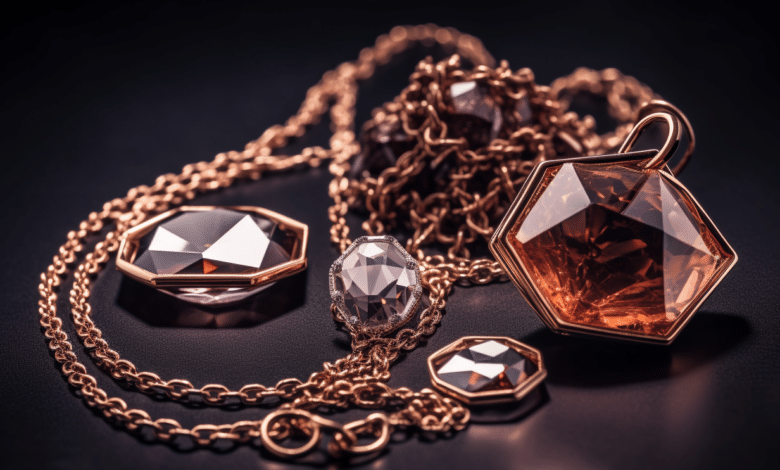8 Unexpected Ways Cryptocurrency is Transforming Jewelry Retail

Cryptocurrency, a once-obscure concept, has burst onto the scene and is transforming industries across the globe. The jewelry industry, with its deep roots in tradition and craftsmanship, is no exception. As the world embraces digital currencies and blockchain technology, unexpected changes are rippling through the luxury goods market, especially in jewelry retail. From secure transactions to revolutionary traceability, let’s explore how cryptocurrency is reshaping the way we buy and sell precious gems and metals.
1. Secure and Anonymous Transactions
Traditional jewelry transactions often involve substantial sums of money, making security a paramount concern. Cryptocurrencies like Bitcoin offer a secure and anonymous way to conduct transactions, eliminating the need for intermediaries and reducing the risk of fraud or theft. With blockchain technology, every transaction is recorded on a decentralized, immutable ledger, ensuring transparency and trust between buyers and sellers.
- Cryptocurrencies provide a secure and anonymous way to conduct jewelry transactions, reducing the risk of fraud or theft.
- Blockchain technology ensures transparency and trust, as every transaction is recorded on a decentralized, immutable ledger.
- High-value jewelry purchases can be made privately and securely, without the need for intermediaries.
2. Global Accessibility and Borderless Trade
The jewelry industry has traditionally been confined by geographic boundaries and currency restrictions. Cryptocurrency, however, transcends borders and enables global accessibility. Buyers and sellers from around the world can seamlessly conduct transactions without worrying about exchange rates or currency conversion fees. This borderless trade opens up new markets and opportunities for jewelers, fostering a truly global jewelry marketplace.
- Cryptocurrency enables global accessibility and borderless trade for the jewelry industry.
- Buyers and sellers can conduct transactions without worrying about exchange rates or currency conversion fees.
- A global jewelry marketplace opens up new opportunities for jewelers to reach customers worldwide.
3. Provenance and Transparency
As consumers become increasingly conscious of ethical and sustainable practices, the demand for transparency in the jewelry supply chain has grown. Blockchain technology offers a solution by providing an immutable record of a gemstone’s journey from mine to market. Each step, from extraction to cutting, polishing, and sale, can be tracked and verified, ensuring the authenticity and ethical sourcing of the product.
- Blockchain technology provides an immutable record of a gemstone’s journey from mine to market.
- Every step, from extraction to cutting, polishing, and sale, can be tracked and verified, ensuring authenticity and ethical sourcing.
- Consumers can have confidence in the provenance and sustainability of their jewelry purchases.
4. Democratization of Investment
Historically, investing in precious metals and gemstones has been reserved for the wealthy and well-connected. Cryptocurrency is democratizing investment opportunities by allowing individuals to purchase fractional ownership of high-value assets. Through tokenization, a physical asset like a diamond can be divided into digital tokens, making it accessible to a broader range of investors. This opens up new avenues for wealth generation and diversification, empowering individuals to participate in the luxury goods market.
- Cryptocurrency allows individuals to purchase fractional ownership of high-value assets like diamonds.
- Through tokenization, physical assets can be divided into digital tokens, making them accessible to a broader range of investors.
- Democratization of investment opportunities empowers individuals to participate in the luxury goods market and diversify their portfolios.
5. Efficient and Cost-Effective Supply Chain
The jewelry supply chain is often complex, involving multiple intermediaries and numerous transactions. Cryptocurrency and blockchain technology can streamline this process by eliminating intermediaries and reducing transaction costs. Smart contracts, self-executing agreements on the blockchain, can automate processes and ensure timely payments, increasing efficiency and reducing overhead costs for jewelers.
- Cryptocurrency and blockchain technology can streamline the complex jewelry supply chain.
- Smart contracts can automate processes and ensure timely payments, reducing overhead costs for jewelers.
- Eliminating intermediaries and reducing transaction costs increases efficiency and profitability for the industry.
6. Innovative Ownership Models
Cryptocurrency is enabling innovative ownership models in the jewelry industry. For example, through non-fungible tokens (NFTs), unique digital representations of physical assets, jewelers can offer virtual ownership of exclusive pieces. This allows collectors to invest in rare and valuable jewelry without the need for physical possession, opening up new revenue streams for jewelers and creating a digital marketplace for luxury goods.
- Non-fungible tokens (NFTs) enable virtual ownership of exclusive jewelry pieces.
- Collectors can invest in rare and valuable jewelry without the need for physical possession.
- Innovative ownership models create new revenue streams for jewelers and a digital marketplace for luxury goods.
7. Customization and Personalization
Cryptocurrency and blockchain technology are revolutionizing the way consumers interact with brands and products. Jewelers can leverage these technologies to offer personalized experiences and customized products. Through decentralized applications (dApps) and smart contracts, customers can design and purchase unique, one-of-a-kind pieces, tailored to their specific preferences and tastes. This level of customization and personalization enhances the customer experience and fosters brand loyalty.
- Decentralized applications (dApps) and smart contracts enable customers to design and purchase unique, one-of-a-kind jewelry pieces.
- Customization and personalization enhance the customer experience and foster brand loyalty.
- Jewelers can offer tailored products and experiences, catering to individual preferences and tastes.
8. Environmental and Social Responsibility
The jewelry industry has faced scrutiny for its environmental and social impact, from unethical mining practices to labor exploitation. Cryptocurrency and blockchain technology can help address these concerns by promoting transparency and accountability throughout the supply chain. Jewelers can leverage these technologies to track the origin of materials, ensure fair labor practices, and minimize their environmental footprint, appealing to conscious consumers and aligning with sustainable practices.
- Blockchain technology promotes transparency and accountability throughout the jewelry supply chain.
- Jewelers can track the origin of materials, ensure fair labor practices, and minimize their environmental footprint.
- Aligning with sustainable practices appeals to conscious consumers and promotes social and environmental responsibility.
As the world continues to embrace cryptocurrency and blockchain technology, the jewelry industry is poised for a paradigm shift. From secure and anonymous transactions to revolutionary traceability and innovative ownership models, the integration of digital currencies and decentralized technologies is reshaping the way we buy, sell, and invest in luxury goods. Jewelers who adapt to these changes and leverage the opportunities presented by cryptocurrency will not only stay ahead of the curve but also redefine the industry for generations to come.












